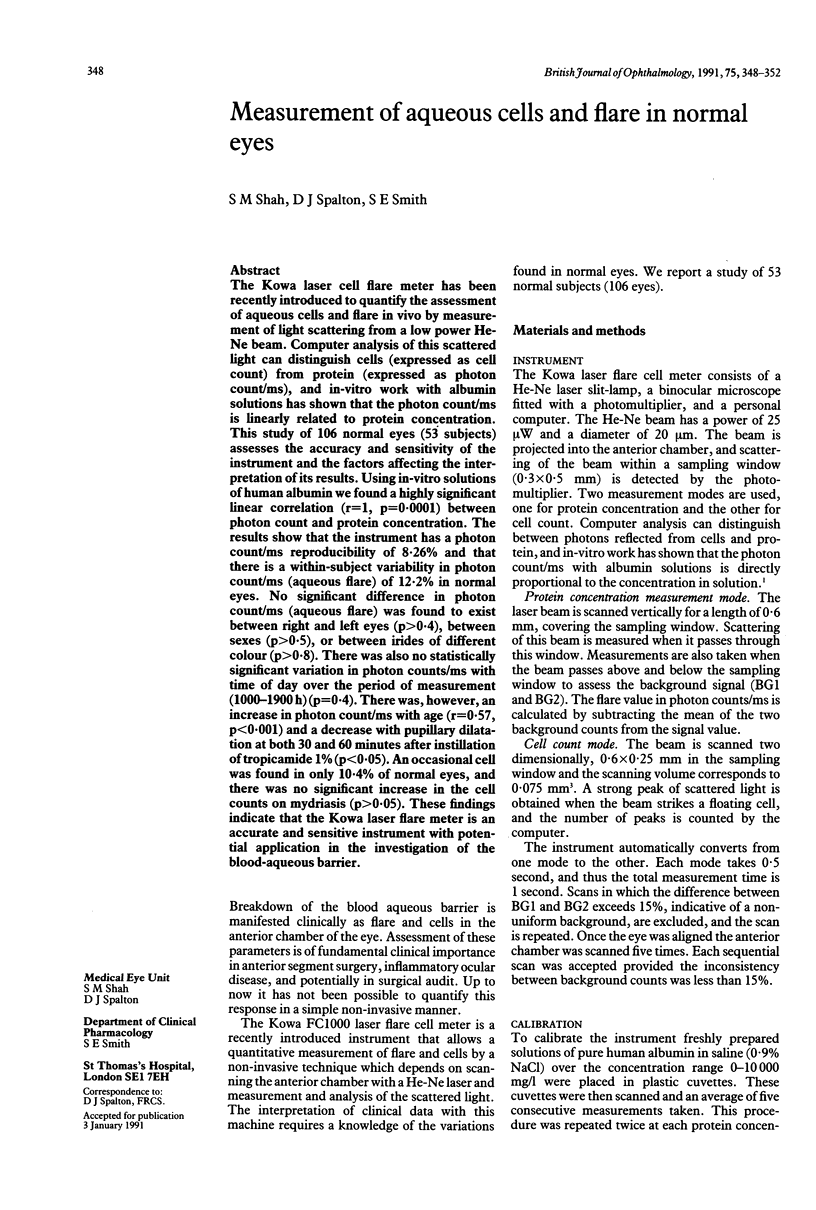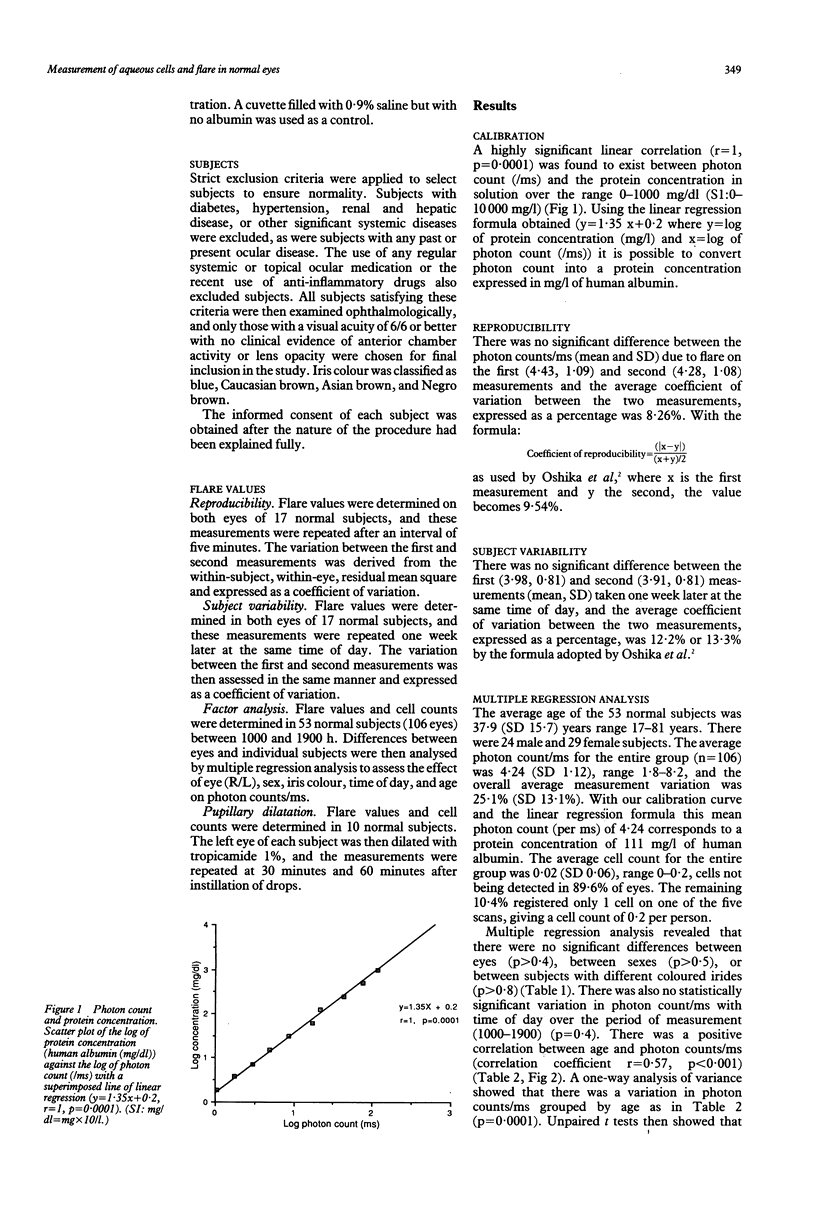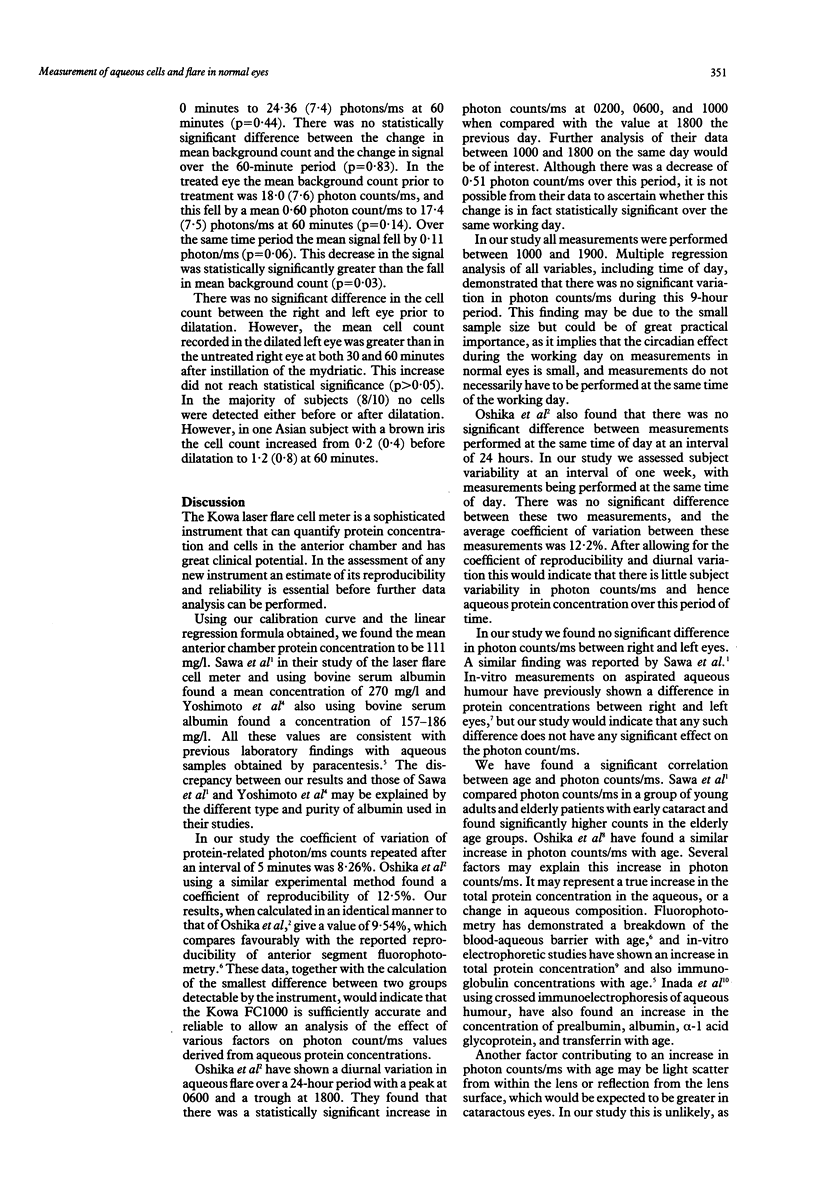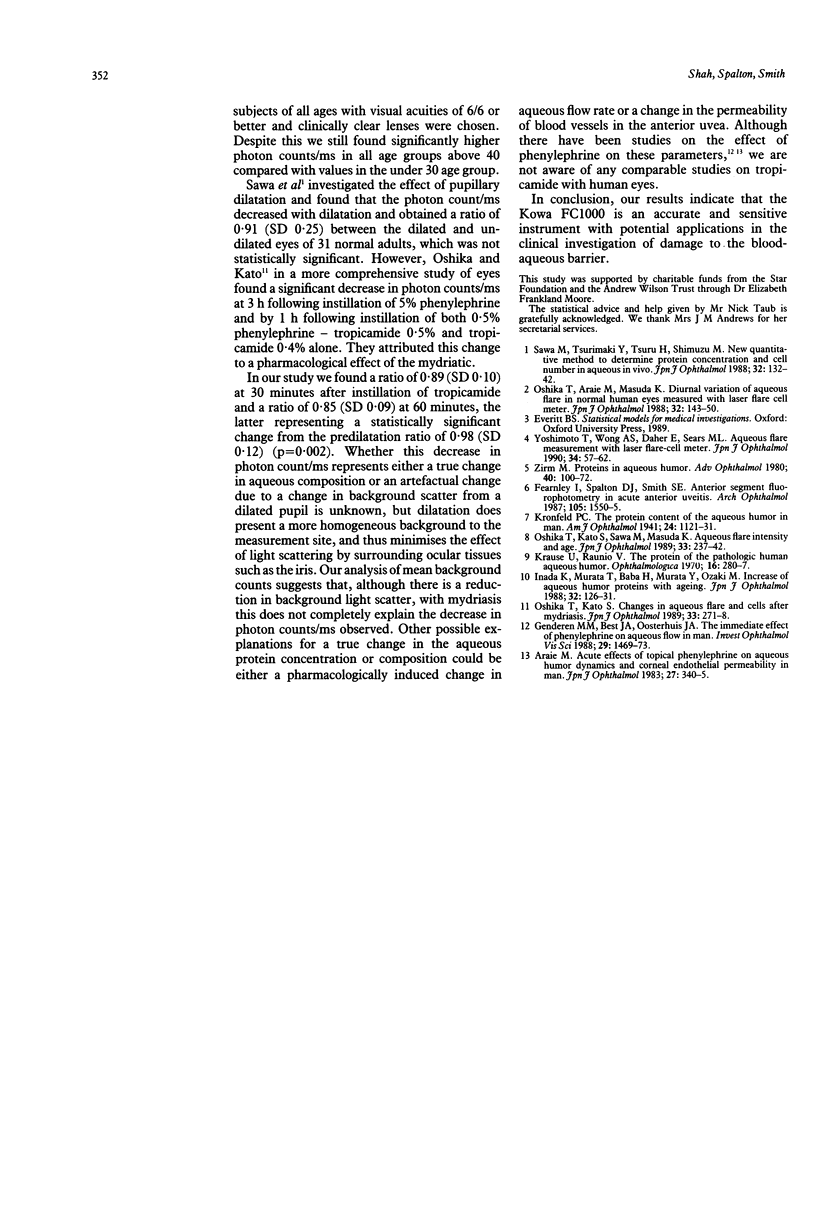Abstract
(abstractThe Kowa laser cell flare meter has been recently introduced to quantify the assessment of aqueous cells and flare in vivo by measurement of light scattering from a low power HeNe beam. Computer analysis of this scattered light can distinguish cells (expressed as cell count) from protein (expressed as photon count/ms), and in-vitro work with albumin solutions has shown that the photon count/ms is linearly related to protein concentration. This study of 106 normal eyes (53 subjects) assesses the accuracy and sensitivity of the instrument and the factors affecting the interpretation of its results. Using in-vitro solutions of human albumin we found a highly significant linear correlation (r = 1, p = 0.0001) between photon count and protein concentration. The results show that the instrument has a photon count/ms reproducibility of 8.26% and that there is a within-subject variability in photon count/ms (aqueous flare) of 12.2% in normal eyes. No significant difference in photon count/ms (aqueous flare) was found to exist between right and left eyes (p greater than 0.4), between sexes (p greater than 0.5), or between irides of different colour (p greater than 0.8). There was also no statistically significant variation in photon counts/ms with time of day over the period of measurement (1000-1900 h) (p = 0.4). There was, however, an increase in photon count/ms with age (r = 0.57, p less than 0.001) and a decrease with pupillary dilatation at both 30 and 60 minutes after instillation of tropicamide 1% (p less than 0.05). An occasional cell was found in only 10.4% of normal eyes, and there was no significant increase in the cell counts on mydriasis (p>0.05). These findings indicate that the Kowa laser flare meter is an accurate and sensitive instrument with potential application in the investigation of blood-aqueous barrier.
Full text
PDF




Selected References
These references are in PubMed. This may not be the complete list of references from this article.
- Araie M. Acute effects of topical phenylephrine on aqueous humor dynamics and corneal endothelial permeability in man. Jpn J Ophthalmol. 1983;27(2):340–345. [PubMed] [Google Scholar]
- Fearnley I. R., Spalton D. J., Smith S. E. Anterior segment fluorophotometry in acute anterior uveitis. Arch Ophthalmol. 1987 Nov;105(11):1550–1555. doi: 10.1001/archopht.1987.01060110096040. [DOI] [PubMed] [Google Scholar]
- Inada K., Murata T., Baba H., Murata Y., Ozaki M. Increase of aqueous humor proteins with aging. Jpn J Ophthalmol. 1988;32(2):126–131. [PubMed] [Google Scholar]
- Krause U., Raunio V. The proteins of the pathologic human aqueous humour. An in vivo investigation. Ophthalmologica. 1970;160(4):280–287. doi: 10.1159/000306003. [DOI] [PubMed] [Google Scholar]
- Oshika T., Araie M., Masuda K. Diurnal variation of aqueous flare in normal human eyes measured with laser flare-cell meter. Jpn J Ophthalmol. 1988;32(2):143–150. [PubMed] [Google Scholar]
- Oshika T., Kato S. Changes in aqueous flare and cells after mydriasis. Jpn J Ophthalmol. 1989;33(3):271–278. [PubMed] [Google Scholar]
- Oshika T., Kato S., Sawa M., Masuda K. Aqueous flare intensity and age. Jpn J Ophthalmol. 1989;33(2):237–242. [PubMed] [Google Scholar]
- Sawa M., Tsurimaki Y., Tsuru T., Shimizu H. New quantitative method to determine protein concentration and cell number in aqueous in vivo. Jpn J Ophthalmol. 1988;32(2):132–142. [PubMed] [Google Scholar]
- Yoshitomi T., Wong A. S., Daher E., Sears M. L. Aqueous flare measurement with laser flare-cell meter. Jpn J Ophthalmol. 1990;34(1):57–62. [PubMed] [Google Scholar]
- Zirm M. Proteins in aqueous humor. Adv Ophthalmol. 1980;40:100–172. [PubMed] [Google Scholar]
- van Genderen M. M., van Best J. A., Oosterhuis J. A. The immediate effect of phenylephrine on aqueous flow in man. Invest Ophthalmol Vis Sci. 1988 Oct;29(10):1469–1473. [PubMed] [Google Scholar]


